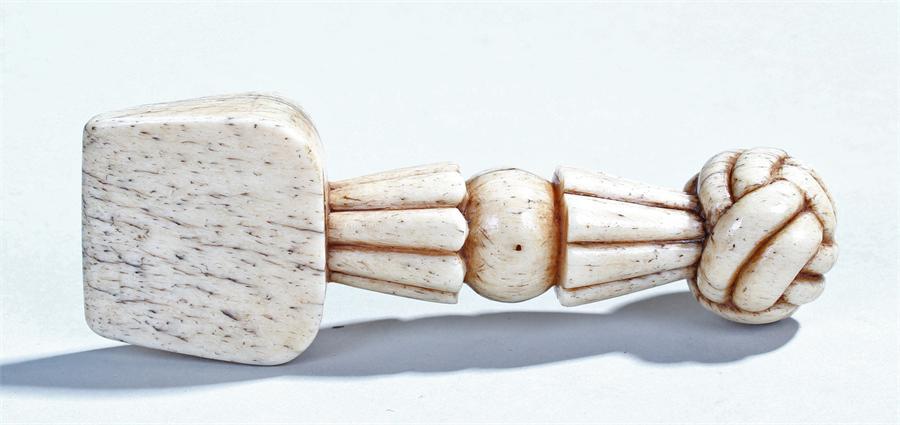TO FAR-OFF Suffolk auctioneers Bishop & Miller and an item probably familiar in bygone Dundee.
This was an unusual whale bone seam rubber, undated by the auctioneers, but probably belonging to the first half of the 19th Century.
Some 11cm in length, the bone tool had a triangular end, gadrooned carved column with central ball, and the decoration of a rope twist knot at its handle end.
Such implements were used by sail-makers to flatten and smooth the seams of heavy canvas sailcloth, where two pieces were joined or the edges were hemmed before they were sewn.
Shipping records show regular connections from Dundee to Archangel for flax from the growing areas north of Moscow, large imports from St Petersburg when the White Sea was frozen, and quantities of cheaper flax from Latvia and Estonia, shipped through Riga. A boom in building mills capitalised on the demand for ships’ canvas, uniforms, tents and hammocks during the Napoleonic Wars – with Baxter’s of Dundee, in a PR masterstroke, providing the canvas to be made up into sail for Nelson’s Victory and other naval ships of the line.
In 1821-22 alone, a dozen power mills were spun out across Dundee. Among them was the great Dens Works, begun by Baxter Brothers in 1821 for machine flax spinning. As an aside, I noticed the recent Courier story on the new Dundee Architectural Trail, listing 27 of the city’s ‘finest’ architectural landmarks. Not a mill among them – and, in my view, Dundee’s single most important contribution to British architecture ignored!
Two great mid-century wars – in Crimea and the American Civil War – brought further orders to Dundee for sails for supply ships, tents for the armies and gun covers, and allowed the town to become the most important producer of coarse linen in Britain. Four million yards of sailcloth was produced in Dundee in one boom year alone.
The Baxters, with the world’s biggest coarse linen factory by the 1850s, probably used such bone seam rubbers in sail canvas weaving – not least with Europe’s biggest whaling fleet at the harbour with its crews adept at fashioning decorative tools from the Right whales they culled.
The smoothing bone appeared at Bishop & Miller on November 12 and took £1000.










